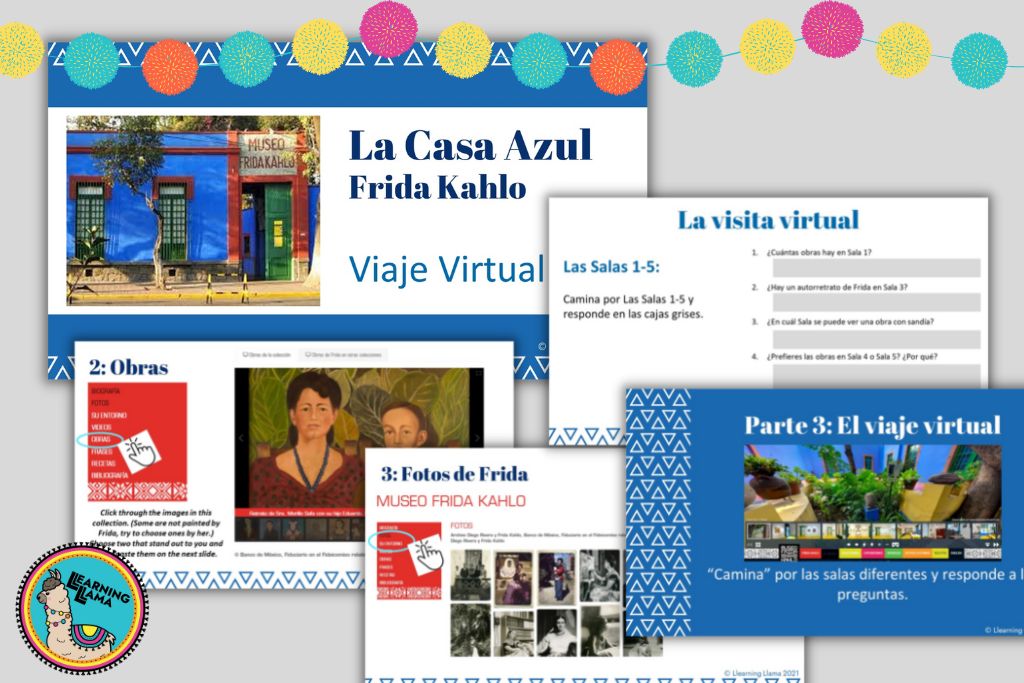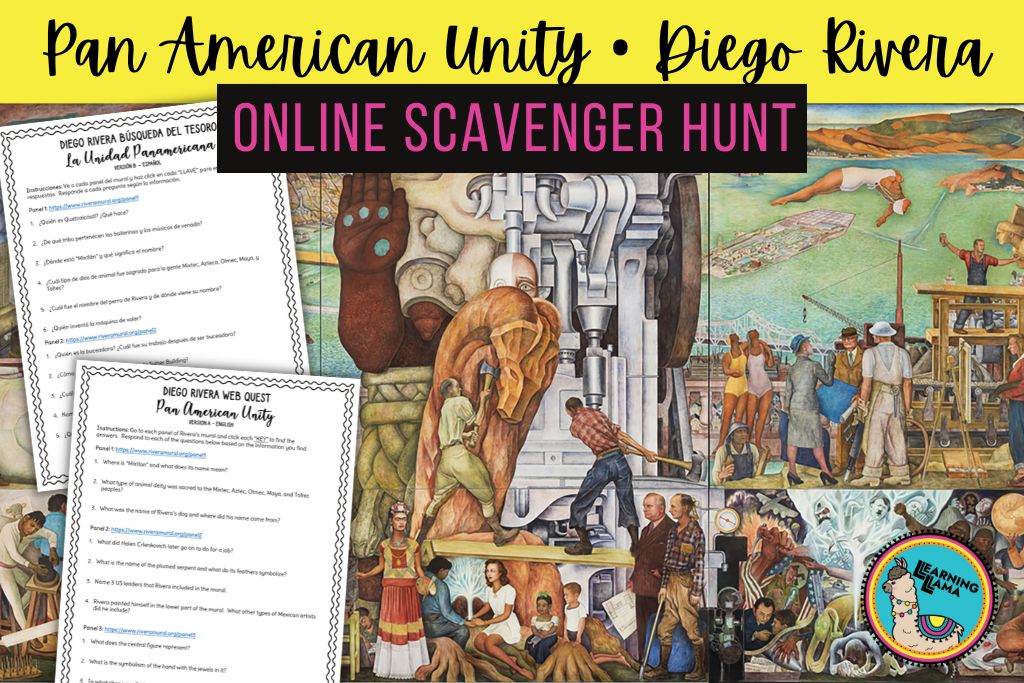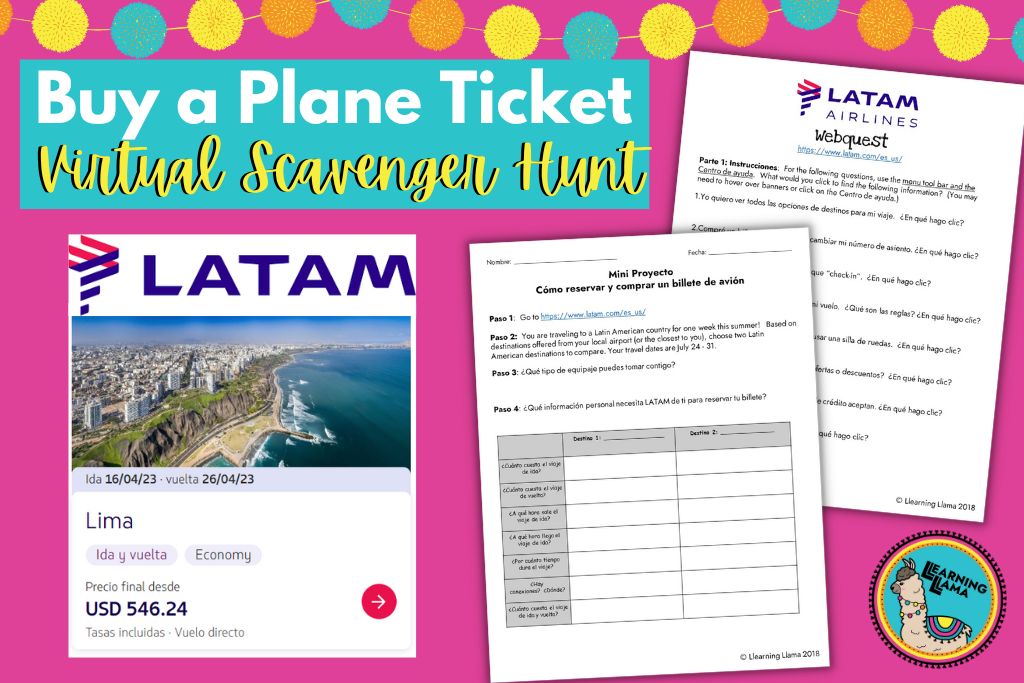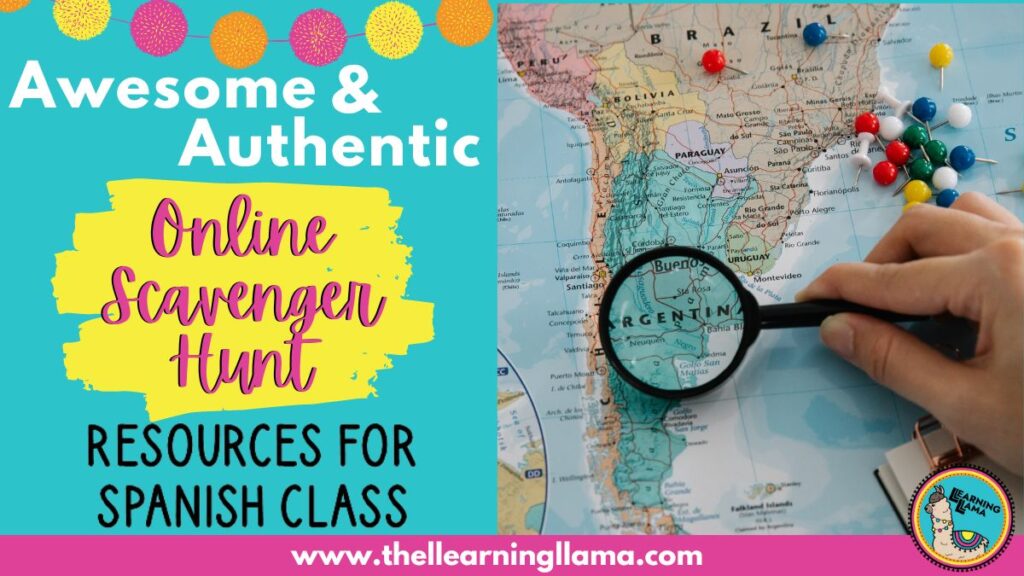I love doing puzzles, scavenger hunts, and escape rooms. I am currently working on a 1000-piece puzzle as I watch Celebrity Escape Room on TV! Every chance I get, I try to bring a fun challenge into my lessons. I have found that doing a virtual scavenger hunt is a really authentic way for students to use the language in a practical situation. Plus, students are motivated when they know there is a puzzle involved! It somehow makes them forget it is a class, and they look at it more like a game. Everybody wins! 😉
It can be hard to bring the same fun and excitement to learning that games bring to the traditional classroom. One new and exciting way to incorporate puzzles and games is through a virtual scavenger hunt.
If you enjoy the virtual scavenger hunt ideas below, you’ll also love virtual field trips. They are similar, just as authentic, and you can learn how to make your own using Google Earth here!
3 Steps to Making a Virtual Scavenger Hunt
Step 1
Find an authentic website. This should be in the target language, but if your students are very novice, then exploring a cultural site in English can still be a great experience. Here are some ideas: museums, Google Arts & Culture, zoos, grocery stores, clothing stores, festivals, etc. Make sure to provide your students with the link (or instructions) for the Spanish version of the website.
Step 2
Determine a purpose for your scavenger hunt. Are students planning a trip to Madrid and need to create an itinerary for 5 different stops? Maybe students are buying Christmas gifts for their family and need to purchase gifts online? Or students are planning their Spanish Club trip to an art museum and need to figure out the logistics. I had my students explore Frida Kahlo’s art museum in Mexico!

Here are some examples of Spanish resources and authentic scenarios you can use in your classroom!
| Art Museums | Museo del Prado Museo de Bellas Artes | Plan Logistics for a Trip: Hours/Ticket Price/Parking, etc. What exhibits do you want to see? Answer questions about famous artworks. |
| Grocery Stores | My American Market Super Market 23 | Find the ingredients to make a specific Hispanic dish Create a grocery list for your family’s dinner Browse the flyer and answer questions about it Find your 10 favorite foods & identify cost |
| Clothing Stores/ Department Stores | El Cortes Inglés Mercado Libre Pepe Ganga | Buy birthday presents for their friends based on their style Find clothing to wear for each season Create your ideal outfit Purchase gifts for your family members at Christmas or Black Friday |
| Zoo/Aquarium | Zoo Aquarium Madrid | How much does a ticket cost? Hours? What animals are in the zoo? Answer questions about the animals. |
| Festivals/Events | La Tomatina Running of the Bulls | How do you participate/buy a ticket? What is the history of the event? What are the rules? What should I wear? |
| Sports | Real Madrid FC Barcelona Liga PR (béisbol) | When are the next home games? Who are the players? What colors are the team? |
| Restaurants | What type of food is served? Hours/location? Order a meal for breakfast, lunch, dinner, dessert. How much will your meal cost? | |
| Ruins/Sites | Machu Picchu Chichén Itzá Easter Island (Moai) | Where is it located? Price/hours? What can you do here? What is the history? How do you get here? |
Step 3
Create a digital worksheet for students to fill in as they search. Ask them specific questions about the website and content. You could also make a generic virtual scavenger hunt worksheet, which is less work for you. A generic worksheet would just ask basic questions about price, hours, location, fun facts, what you want to see, etc. If you are doing a specific unit on clothing, sports, food, etc. you may want to make your questions more specific. For example: Find a white shirt, red pants, baseball hat, etc. Screenshot the clothing, write the brand, and the cost.
Example Virtual Scavenger Hunts
In Spanish 3, we are currently studying artists. So, I made an online scavenger hunt for Diego Rivera’s Pan American Unity mural. Check it out HERE. It comes with English and Spanish versions, so even the lower levels studying Diego Rivera can play! For a museum virtual scavenger hunt, my students traveled to Frida Kahlo’s Casa Azul museum.

For a travel unit, I had my students complete two authentic webquests. They had to book a plane ticket using LATAM airlines and then book a train ticket to Machu Picchu.

Finally, for a festival, students experience La Tomatine in Buñol, Spain with a webquest. They use a few different sites for this scavenger hunt, so they can purchase tickets, buy clothing, etc. Learn more about my 7 Tomatina lessons here.
It’s that simple! A virtual scavenger hunt can keep students busy for a while and it uses authentic resources! Students love exploring websites, feeling like they are traveling or using the language for a real purpose.






4 Responses